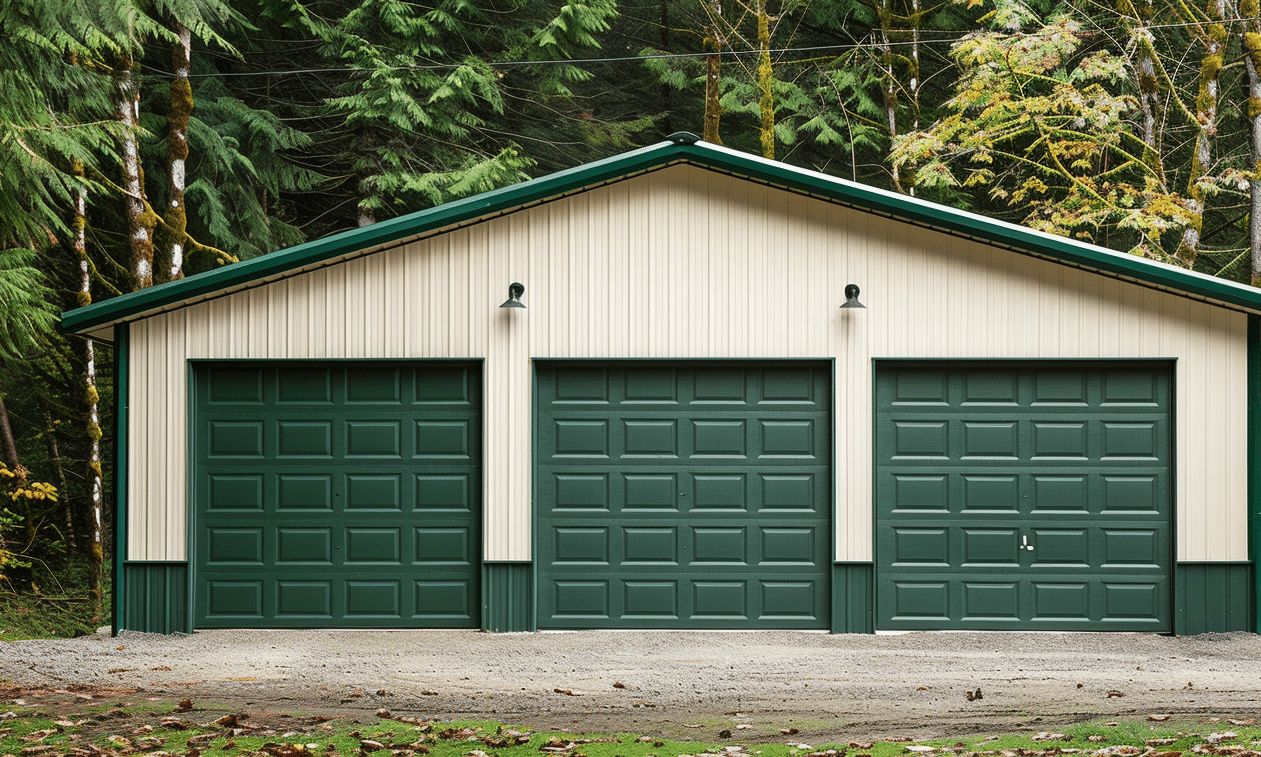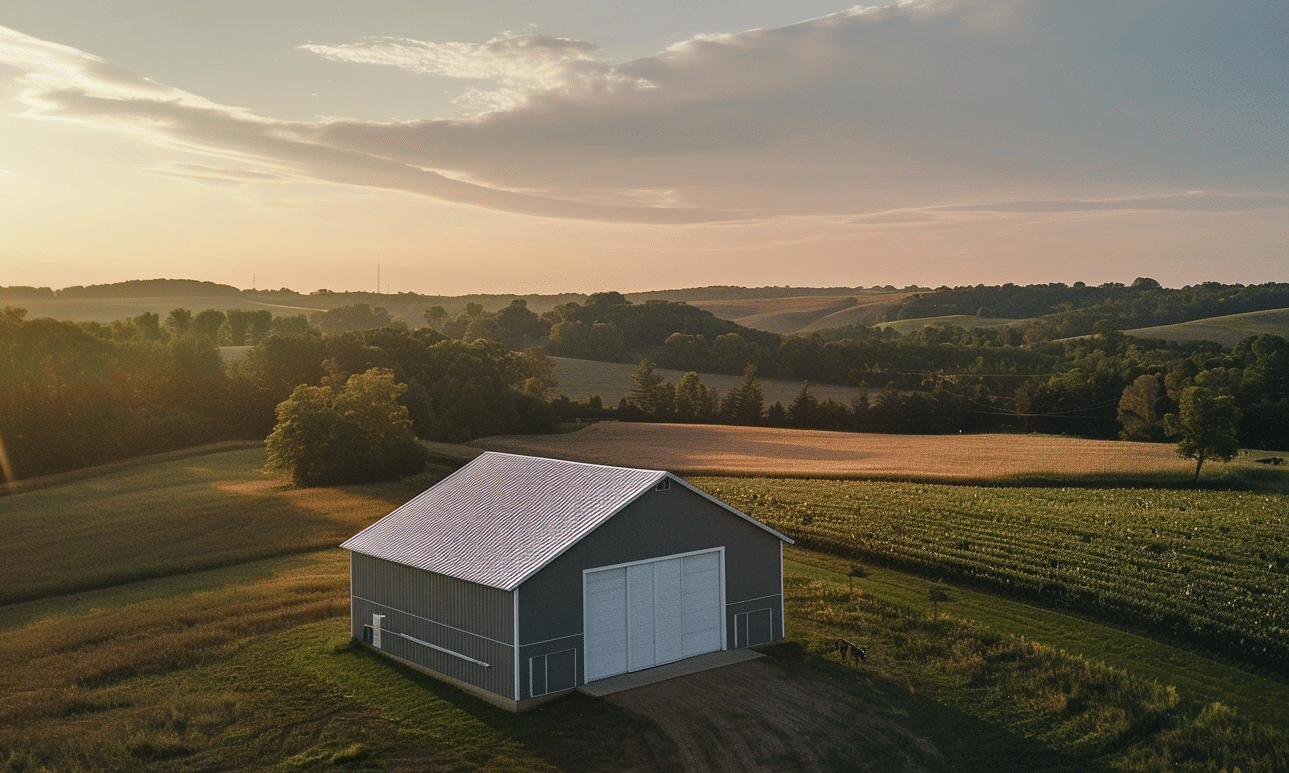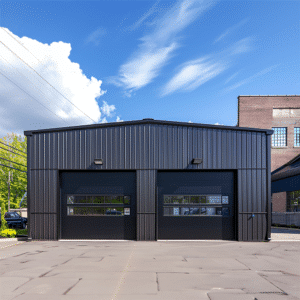When it comes to finding the perfect solution for additional storage, workspace, or a home for your treasured vehicles, garage kits present an attractive option. But the crucial question that often arises is: Wood or metal? Each comes with its own set of advantages and drawbacks. Which one aligns best with your needs? Let’s explore the world of wood vs. metal garage kits to help make this decision a bit clearer.
Understanding the Basics: Wood vs. Metal Garage Kits
When you’re deciding between wood and metal garage kits, it’s akin to choosing between cozy charm and rugged strength. Each material appeals to different needs and aesthetics, much like the debate between cozy log cabins and sleek modern homes. Both garage materials have been around for a long time and cater to varied preferences in terms of style, durability, and cost.
Pros and Cons of Wood Garage Kits
Wood has been a staple building material for centuries. Known for its classic and warm aesthetic, wood garage kits often find favor with those who seek to match their garage with traditional home architecture or who appreciate the rustic ambiance wood naturally offers.
**Pros of Wood Garage Kits:**
1. **Aesthetics**: Wood garages offer natural beauty and a warm, inviting look that easily complements many home styles.
2. **Insulating Properties**: Wood naturally provides insulation, which can be beneficial in colder climates.
3. **Customization**: With wood, you have greater flexibility in terms of design, finishing, and color options.
4. **Easy Modifications**: Future modifications to a wood garage can be more straightforward compared to metal.
**Cons of Wood Garage Kits:**
1. **Maintenance**: Wood requires regular maintenance, including staining or painting, to protect against weather elements and pests.
2. **Durability**: Over time, wood is susceptible to rot, warping, and pest infestations.
3. **Cost**: Depending on the quality of wood and design complexity, upfront costs for a wood garage kit can be higher.
Pros and Cons of Metal Garage Kits
Metal garage kits wave the banner of durability and strength. They are often the choice for those who require a long-lasting structure with robust protection against the elements—essentially the heavy-duty SUVs of the garage world.
**Pros of Metal Garage Kits:**
1. **Durability**: Metal garages are resistant to rot, pests, and fire, making them exceptionally durable.
2. **Low Maintenance**: These structures typically require less maintenance compared to wood, as they don’t need periodic painting or staining.
3. **Cost-Effectiveness**: Typically, metal garage kits are more affordable than their wooden counterparts.
4. **Speed of Construction**: They tend to be quicker to assemble, which can be advantageous if time is of the essence.
**Cons of Metal Garage Kits:**
1. **Thermal Conductivity**: Metal easily conducts heat and cold, which could require additional insulation for comfort.
2. **Aesthetic Limitation**: While improvements have been made, metal garages may not offer the same level of aesthetic variety as wood.
3. **Less Flexibility**: Customizing and modifying a metal garage after initial construction can be more challenging.
Real-World Considerations
Let’s step beyond the theory and examine how these garage kits perform in the real world. Imagine owning a classic car collection in the rugged terrains of Ontario. Would a wooden garage suffice against those icy winters? Perhaps a metal structure might be better suited.
For instance, Garage Kits vs. Traditional Garages often tease out these very issues, highlighting that while kits can be more cost-effective, they still need to meet the specific demands of their environment and usage. Additionally, the size of the garage, such as a compact 12×20 garage package versus a spacious 20×24 garage package, can also influence your material choice.

Choosing Between Wood and Metal: Factors to Consider
When deciding between wood and metal garage kits, several factors should guide your decision:
1. **Budget**: Determine your budget, factoring in both upfront and long-term costs. Consider both the initial purchase and [maintenance] costs.
2. **Climate and Environment**: Consider your local climate and how each material will fare. Wood might perform better in temperate zones, while metal might be better for regions prone to weather extremes.
3. **Intended Use**: Will the garage serve as a basic storage space, a high-traffic workshop, or a temperature-sensitive storeroom? The intended use might dictate the need for extra insulation or ventilation solutions.
4. **Personal Preference**: At the end of the day, personal preference plays a critical role. Consider which material aligns better with your home style and personal taste.
Transitioning to a Solution: Where to Begin?
Once you’ve weighed these factors, the next step is to seek out reputable providers who offer kits tailored to your specific needs. In regions like Ontario, there are many options for garage erection kits Ontario that cater to both the aesthetic desires associated with wooden structures and the durability required by metal.
Budding do-it-yourself enthusiasts can also find inspiration in the abundant DIY resources available from retailers like Canadian Tire.
Conclusion: Making an Informed Decision
Ultimately, the choice between wood vs. metal garage kits boils down to a combination of personal preference, budget considerations, and environmental factors. While wood offers a timeless appeal with the potential for beautiful customizations, metal provides unparalleled durability and ease of maintenance.
Evaluate your priorities, whether they lean towards the charm of wood or the resilience of metal. Remember, there’s no definitive right choice, but there is a right choice for your individual needs. Make this practical addition to your property a reflection of your taste and requirements. With thoughtful consideration, your new garage will not only enhance your property but also provide years of reliable service.










